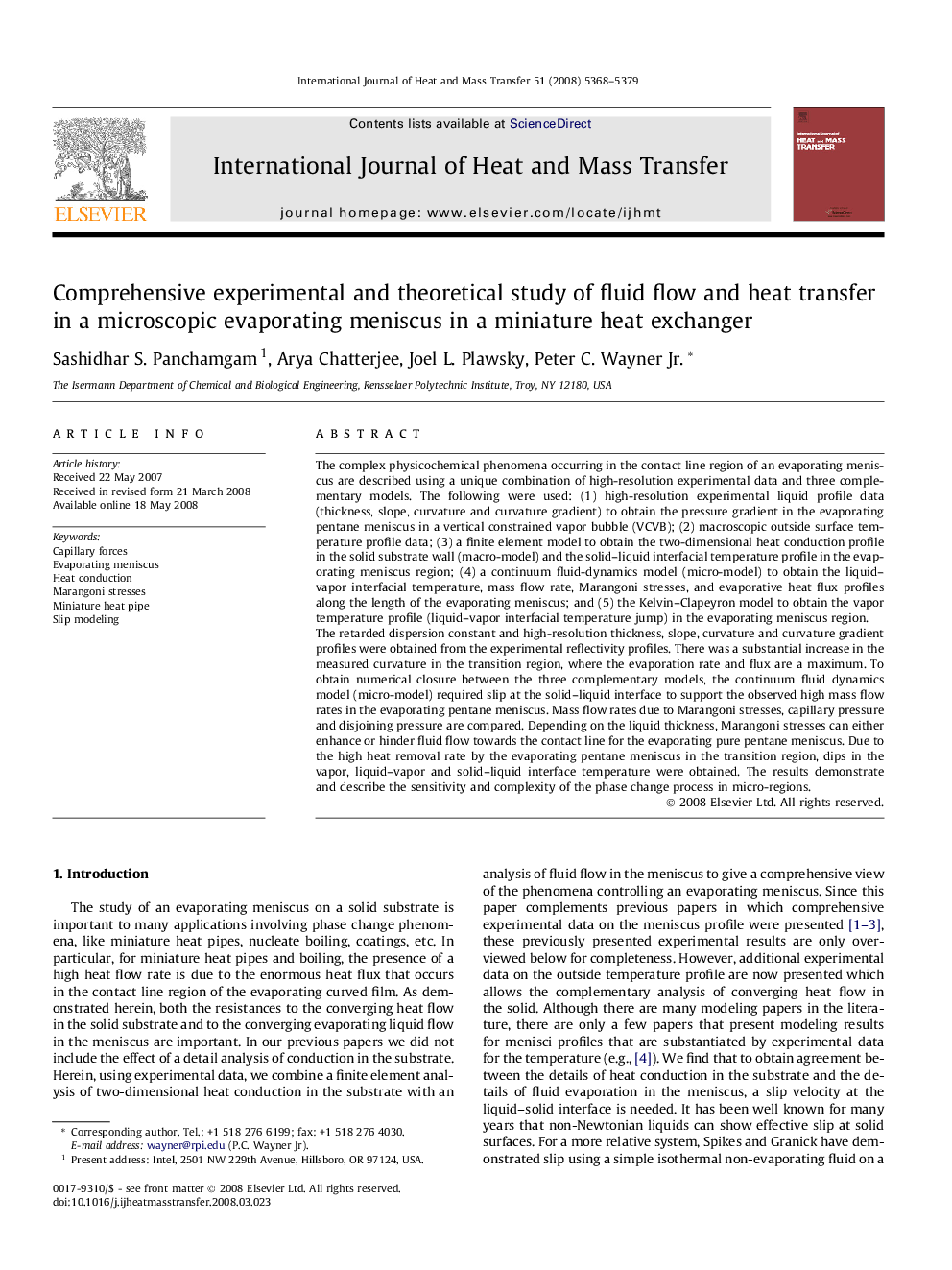| کد مقاله | کد نشریه | سال انتشار | مقاله انگلیسی | نسخه تمام متن |
|---|---|---|---|---|
| 662329 | 1458142 | 2008 | 12 صفحه PDF | دانلود رایگان |

The complex physicochemical phenomena occurring in the contact line region of an evaporating meniscus are described using a unique combination of high-resolution experimental data and three complementary models. The following were used: (1) high-resolution experimental liquid profile data (thickness, slope, curvature and curvature gradient) to obtain the pressure gradient in the evaporating pentane meniscus in a vertical constrained vapor bubble (VCVB); (2) macroscopic outside surface temperature profile data; (3) a finite element model to obtain the two-dimensional heat conduction profile in the solid substrate wall (macro-model) and the solid–liquid interfacial temperature profile in the evaporating meniscus region; (4) a continuum fluid-dynamics model (micro-model) to obtain the liquid–vapor interfacial temperature, mass flow rate, Marangoni stresses, and evaporative heat flux profiles along the length of the evaporating meniscus; and (5) the Kelvin–Clapeyron model to obtain the vapor temperature profile (liquid–vapor interfacial temperature jump) in the evaporating meniscus region.The retarded dispersion constant and high-resolution thickness, slope, curvature and curvature gradient profiles were obtained from the experimental reflectivity profiles. There was a substantial increase in the measured curvature in the transition region, where the evaporation rate and flux are a maximum. To obtain numerical closure between the three complementary models, the continuum fluid dynamics model (micro-model) required slip at the solid–liquid interface to support the observed high mass flow rates in the evaporating pentane meniscus. Mass flow rates due to Marangoni stresses, capillary pressure and disjoining pressure are compared. Depending on the liquid thickness, Marangoni stresses can either enhance or hinder fluid flow towards the contact line for the evaporating pure pentane meniscus. Due to the high heat removal rate by the evaporating pentane meniscus in the transition region, dips in the vapor, liquid–vapor and solid–liquid interface temperature were obtained. The results demonstrate and describe the sensitivity and complexity of the phase change process in micro-regions.
Journal: International Journal of Heat and Mass Transfer - Volume 51, Issues 21–22, October 2008, Pages 5368–5379